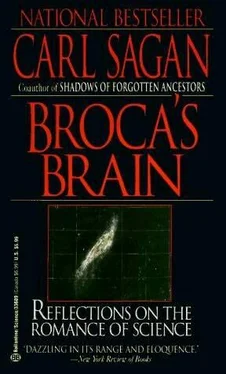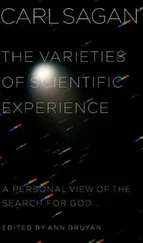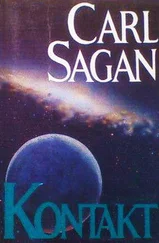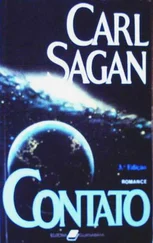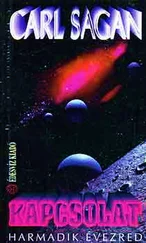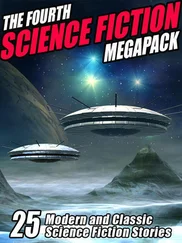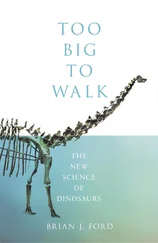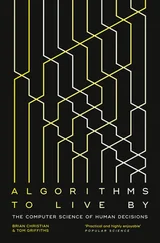Carl Sagan - Broca's Brain - The Romance of Science
Здесь есть возможность читать онлайн «Carl Sagan - Broca's Brain - The Romance of Science» весь текст электронной книги совершенно бесплатно (целиком полную версию без сокращений). В некоторых случаях можно слушать аудио, скачать через торрент в формате fb2 и присутствует краткое содержание. Жанр: Физика, на английском языке. Описание произведения, (предисловие) а так же отзывы посетителей доступны на портале библиотеки ЛибКат.
- Название:Broca's Brain: The Romance of Science
- Автор:
- Жанр:
- Год:неизвестен
- ISBN:нет данных
- Рейтинг книги:3 / 5. Голосов: 1
-
Избранное:Добавить в избранное
- Отзывы:
-
Ваша оценка:
- 60
- 1
- 2
- 3
- 4
- 5
Broca's Brain: The Romance of Science: краткое содержание, описание и аннотация
Предлагаем к чтению аннотацию, описание, краткое содержание или предисловие (зависит от того, что написал сам автор книги «Broca's Brain: The Romance of Science»). Если вы не нашли необходимую информацию о книге — напишите в комментариях, мы постараемся отыскать её.
Broca's Brain: The Romance of Science — читать онлайн бесплатно полную книгу (весь текст) целиком
Ниже представлен текст книги, разбитый по страницам. Система сохранения места последней прочитанной страницы, позволяет с удобством читать онлайн бесплатно книгу «Broca's Brain: The Romance of Science», без необходимости каждый раз заново искать на чём Вы остановились. Поставьте закладку, и сможете в любой момент перейти на страницу, на которой закончили чтение.
Интервал:
Закладка:
HIS NAME IS STANISLAV GROF. In some pronunciations his first and last names rhyme. He is a physician and a psychiatrist who has, for more than twenty years, employed LSD and other psychedelic drugs in psychotherapy. His work long antedates the American drug culture, having begun in Prague, Czechoslovakia, in 1956 and continuing in recent years in the slightly different cultural setting of Baltimore, Maryland. Grof probably has more continuing scientific experience on the effects of psychedelic drugs on patients than anyone else. [24]He stresses that whereas LSD can be used for recreational and aesthetic purposes, it can have other and more profound effects, one of which is the accurate recollection of perinatal experiences. “Perinatal” is a neologism for “around birth,” and is intended to apply not just to the time immediately after birth but to the time before as well. (It is a parallel construction to “perithanatic,” near-death.) He reports a large number of patients who, after a suitable number of sessions, actually re-experience rather than merely recollect profound experiences, long gone and considered intractable to our imperfect memories, from perinatal times. This is, in fact, a fairly common LSD experience, by no means limited to Grof’s patients.
Grof distinguishes four perinatal stages recovered under psychedelic therapy. Stage 1 is the blissful complacency of the child in the womb, free of all anxiety, the center of a small, dark, warm universe-a cosmos in an amniotic sac. In its intrauterine state the fetus seems to experience something very close to the oceanic ecstasy described by Freud as a fount of the religious sensibility. The fetus is, of course, moving. Just before birth it is probably as alert, perhaps even more alert, than just after birth. It does not seem impossible that we may occasionally and imperfectly remember this Edenic, golden age, when every need-for food, oxygen, warmth and waste disposal-was satisfied before it was sensed, provided automatically by a superbly designed life-support system; and, in dim recollection years later, describe it as “being one with the universe.”
In Stage 2, the uterine contractions begin. The walls to which the amniotic sac is anchored, the foundation of the stable intrauterine environment, become traitorous. The fetus is dreadfully compressed. The universe seems to pulsate, a benign world suddenly converted into a cosmic torture chamber. The contractions may last intermittently for hours. As time goes on, they become more intense. No hope of surcease is offered. The fetus has done nothing to deserve such a fate, an innocent whose cosmos has turned upon it, administering seemingly endless agony. The severity of this experience is apparent to anyone who has seen a neonatal cranial distortion that is still evident days after birth. While I can understand a strong motivation to obliterate utterly any trace of this agony, might it not resurface under stress? Might not, Grof asks, the hazy and repressed memory of this experience prompt paranoid fantasies and explain our occasional human predilections for sadism and masochism, for an identification of assailant and victim, for that childlike zest for destruction in a world which, for all we know, may tomorrow become terrifyingly unpredictable and unreliable? Grof finds recollections in the next stage connected with images of tidal waves and earthquakes, the analogues in the physical world of the intrauterine betrayal.
Stage 3 is the end of the birth process, when the child’s head has penetrated the cervix and might, even if the eyes are closed, perceive a tunnel illuminated at one end and sense the brilliant radiance of the extrauterine world. The discovery of light for a creature that has lived its entire existence in darkness must be a profound and on some level an unforgettable experience. And there, dimly made out by the low resolution of the newborn’s eyes, is some godlike figure surrounded by a halo of light-the Midwife or the Obstetrician or the Father. At the end of a monstrous travail, the baby flies away from the uterine universe, and rises toward the lights and the gods.
Stage 4 is the time immediately after birth when the perinatal apnea has dissipated, when the child is blanketed or swaddled, hugged and given nourishment. If recollected accurately, the contrast between Stages 1 and 2 and 2 and 4, for an infant utterly without other experience, must be very deep and striking; and the importance of Stage 3 as the passage between agony and at least a tender simulacrum of the cosmic unity of Stage 1 must have a powerful influence on the child’s later view of the world.
There is, of course, room for skepticism in Grof’s account and in my expansion upon it. There are many questions to be answered. Do children born before labor by Caesarean section never recall the agonizing Stage 2? Under psychedelic therapy, do they report fewer images of catastrophic earthquakes and tidal waves than those born by normal deliveries? Conversely, are children born after the particularly severe uterine contractions induced in “elective labor” by the hormone oxytocin [25]more likely to acquire the psychological burdens of Stage 2? If the mother is given a strong sedative, will the baby upon maturity recall a very different transition from Stage 1 directly to Stage 4 and never report, in a perithanatic experience, a radiant epiphany? Can neonates resolve an image at the moment of birth or are they merely sensitive to light and darkness? Might the description, in the near-death experience, of a fuzzy and glowing god without hard edges be a perfect recollection of an imperfect neonatal image? Are Grof’s patients selected from the widest possible range of human beings or are these accounts restricted to an unrepresentative subset of the human community?
It is easy to understand that there might be more personal objections to these ideas, a resistance perhaps similar to the kind of chauvinism that can be detected in justifications of carnivorous eating habits: the lobsters have no central nervous system; they don’t mind being dropped alive into boiling water. Well, maybe. But the lobster-eaters have a vested interest in this particular hypothesis on the neurophysiology of pain. In the same way I wonder if most adults do not have a vested interest in believing that infants possess very limited powers of perception and memory, that there is no way the birth experience could have a profound and, in particular, a profoundly negative influence.
If Grof is right about all this, we must ask why such recollections are possible-why, if the perinatal experience has produced enormous unhappiness, evolution has not selected out the negative psychological consequences. There are some things that newborn infants must do. They must be good at sucking; otherwise they will die. They must, by and large, look cute because at least in previous epochs of human history, infants who in some way seemed appealing were better taken care of. But must newborn babies see images of their environment? Must they remember the horrors of the perinatal experience? In what sense is there survival value in that? The answer might be that the pros outweigh the cons-perhaps the loss of a universe to which we are perfectly adjusted motivates us powerfully to change the world and improve the human circumstance. Perhaps that striving, questing aspect of the human spirit would be absent if it were not for the horrors of birth.
I am fascinated by the point-which I stress in my book The Dragons of Eden -that the pain of childbirth is especially marked in human mothers because of the enormous recent growth of the brain in the last few million years. It would seem that our intelligence is the source of our unhappiness in an almost literal way; but it would also imply that our unhappiness is the source of our strength as a species.
Читать дальшеИнтервал:
Закладка:
Похожие книги на «Broca's Brain: The Romance of Science»
Представляем Вашему вниманию похожие книги на «Broca's Brain: The Romance of Science» списком для выбора. Мы отобрали схожую по названию и смыслу литературу в надежде предоставить читателям больше вариантов отыскать новые, интересные, ещё непрочитанные произведения.
Обсуждение, отзывы о книге «Broca's Brain: The Romance of Science» и просто собственные мнения читателей. Оставьте ваши комментарии, напишите, что Вы думаете о произведении, его смысле или главных героях. Укажите что конкретно понравилось, а что нет, и почему Вы так считаете.
